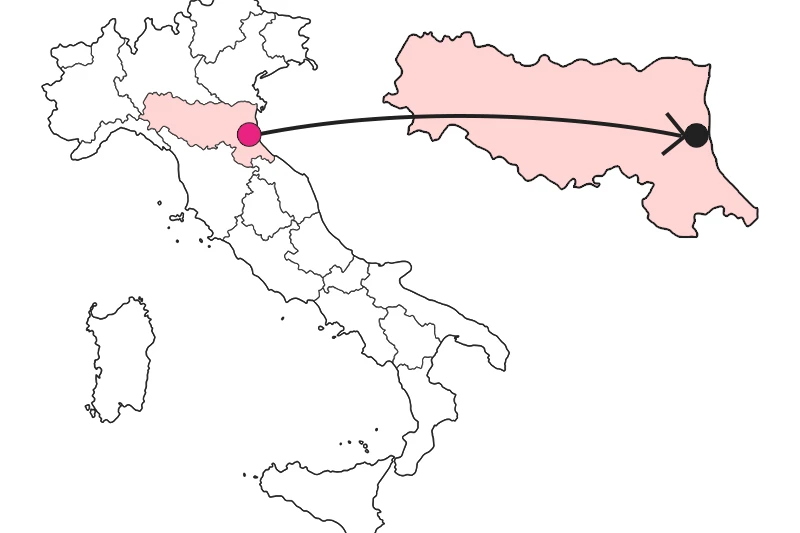SHARRYLAND


Where is

What it is and where it is
Cervia is one of the best-known seaside resorts in the province of Ravenna. What makes it unique, also in terms of tourism, however, are the salt pans that stretch for hundreds of hectares in its hinterland. What in the early days were coastal lagoons were destined for salt production as early as the Etruscan-Roman period, preserving their exceptional economic value until recent times. Still in production, Cervia's salt pans have since gained further value as a nature reserve.
Why it is special
The road that points inland from Cervia crosses the salt marshes, offering the most immediate opportunity to grasp their faunal richness. The most conspicuous presence is that of the pink flamingo, a large wader that spends most of its time foraging by filtering the water with its curved beak. Then, with the help of binoculars, you will also recognize other graceful marsh birds, for example the stilt-bird and theavocet: red legs and straight beak, the former; curved upward beak, the latter.
Not to be missed
Cervia's maritime core formed in the late seventeenth century around the Salt Warehouses, where the product was stockpiled in anticipation of export. One of these imposing warehouses overlooking the canal port has recently been turned into the Salt Museum and home to the "Salt Civilization" group. Among other things, this association keeps in operation the Camillone Salt Works, a small area managed in a manner entirely faithful to tradition. From here comes the whole salt protected and promoted by a Slow Food Presidium.
A bit of history
Cervia's salt pans were for centuries in the sphere of interest of the Republic of Venice. Every year the harvest was loaded onto a flotilla of ships that reached the lagoon city, disembarking the cargo at the Magazzini del Sale, on the Giudecca Canal , where it was stored in sacks under special seals: a salt of particular value, still called 'sweet' because it was obtained through a process of slow evaporation, which excludes the deposit of the more bitter chlorides.
Curiosity
It was the salt miners who first sensed the properties of the so-called 'mother water,' of high minerality, which is formed in the intermediate stage of the evaporation process: a panacea for certain skin discomforts and, like mud, for the relief of joint pain. This was the cue, in the early 1900s, for the start-up of an open-air spa, attached to the salt marsh, which today finds continuity in the treatment and wellness center set up in the Cervia Pine Forest.
Enter the Map of Italy's Undiscovered Wonders and find treasures where you least expect it... Inspire, Recommend, Share...
Collections
The Map thanks:
Enter the Map of Italy's Undiscovered Wonders and find treasures where you least expect it... Inspire, Recommend, Share...
Where is

Collections


